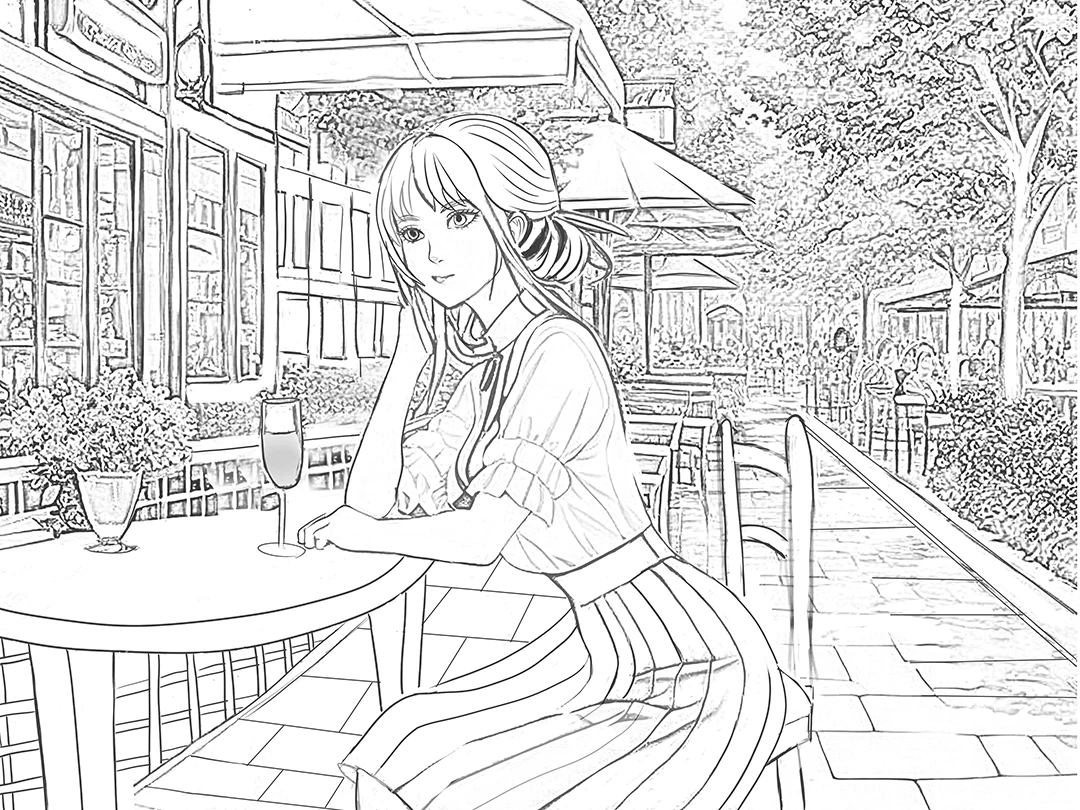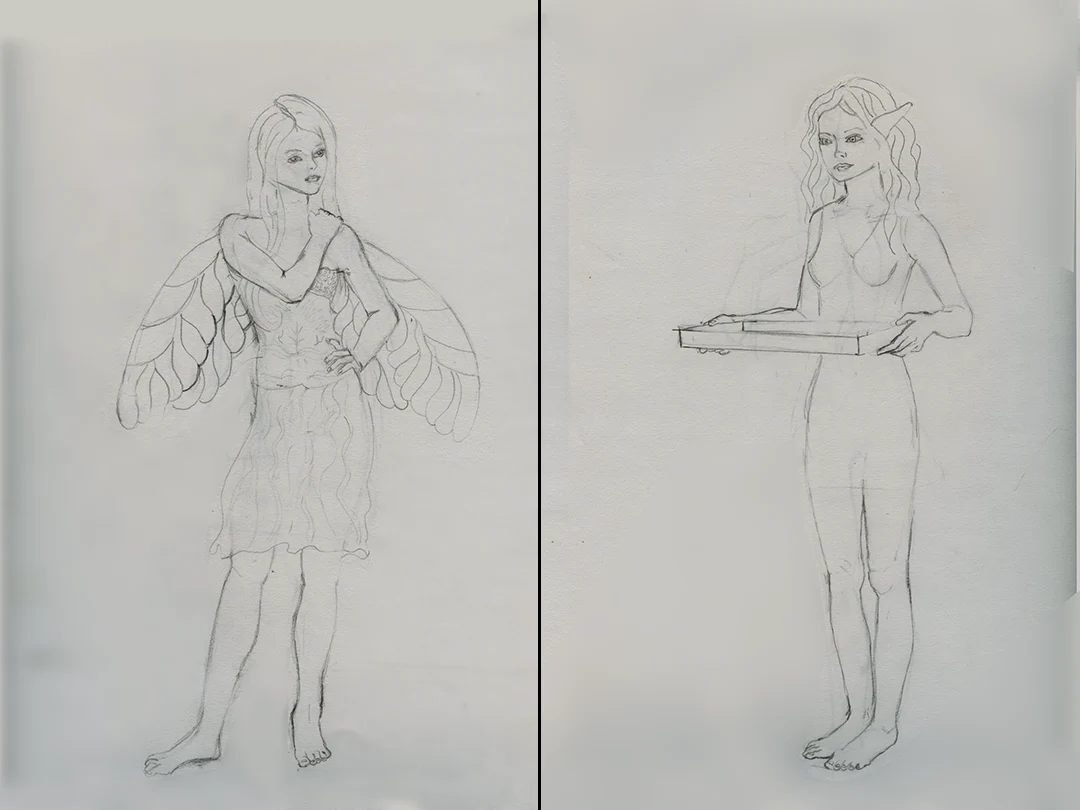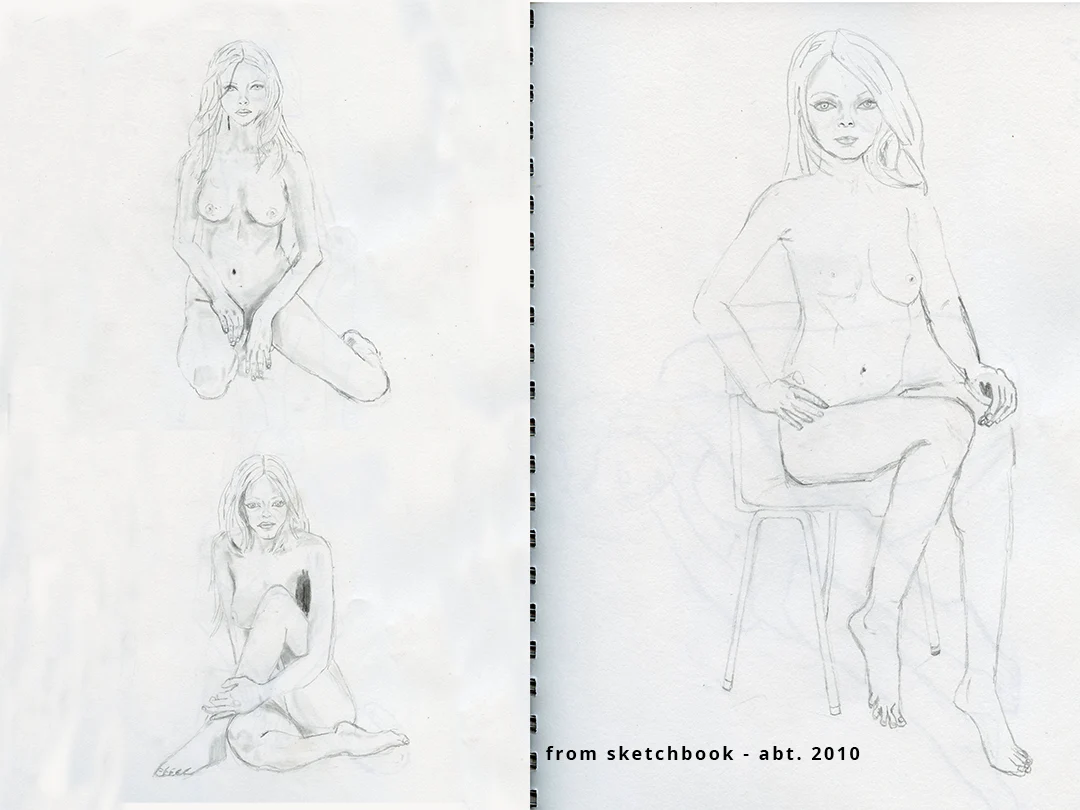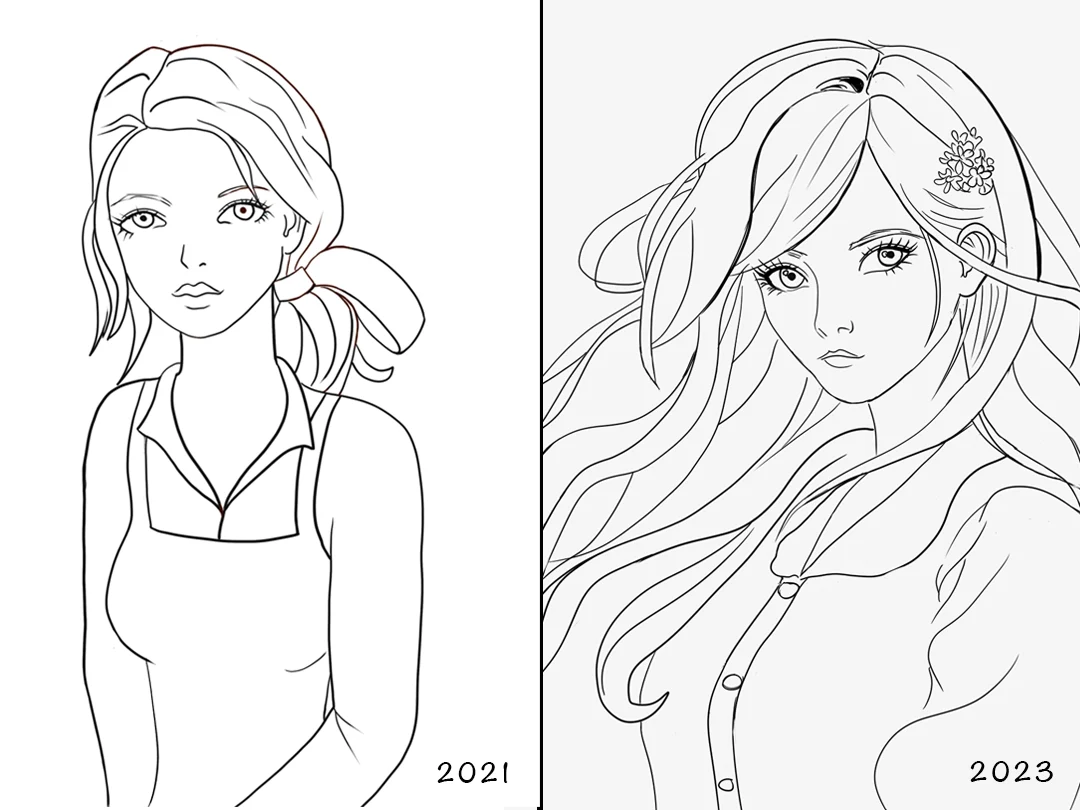
When I started college, I wasn’t sure what to major in. My mom suggested I try art because she knew I loved crafts and making things. And she knew I loved drawing the human figure. So, with her encouragement, I started as an art major. There wasn’t a face and figure drawing class at the beginner level. Most of us who study art in college begin with Drawing 101. And that’s where I started. But my first drawing class convinced me I’d never learn to draw well enough to be an artist. It was a disheartening experience, and I eventually switched my major to botany.
It wasn’t until many years later I found a small window of free time during my son’s afternoon naps that I tried my hand at drawing again. I pulled a book off my shelves that had been sitting there a very long time. That book was Betty Edward’s “Drawing on the Right Side of the Brain.” Working through the exercises in that book, I realized realistic drawing is a skill we all can acquire.
Drawing realistically takes practice and patience. I practiced drawing portraits of people and animals, gradually improving my skills. I also learned various techniques from “Drawing on the Right Side of the Brain,” such as negative space drawing, upside-down drawing, and contour drawing.
If you decide to practice drawing, keep your old sketchbooks! They are an inspiration and a visual diary showing what you were interested in at the time. They are also a record of your improvement. Below are some sketches from a notebook I worked on over 10 years ago. Keeping a record of your journey allows you to track your improvement much better than comparing yourself to artists with more experience.
This article is written for those who wish to learn to draw with some practical tips to get started drawing figures, which is one of my favorite subjects. If that’s you, read on, it’s never too late to learn to improve your drawing.


Figure Drawing: The Magic of Capturing the Essence of a Person
The best part about drawing is anyone can learn. Even if you think you can’t draw a stick figure to save your life. It might sound like a tall order, but it’s entirely possible. I promise.
In this post, we’ll take a quick journey through all the basics. I’ll then delve deeper into each aspect in future blog posts.
So, grab your pencils and sketchbook, and let’s discover how to draw faces and figures together. You might surprise yourself with what you’re capable of!
Note: Although this blog post focuses on pencil drawing, the same techniques are used in drawing digitally. Grab your tablet or iPad and follow along if you prefer to draw digitally. Look for the beginner tutorials to on my blog or the web for using Procreate and Clip Studio Paint if you are new to digital drawing.
The Essential Art Supplies for Your Face and Figure Drawing Adventure
Before delving into the techniques of drawing figures, it is crucial to gather suitable materials. Don’t worry. You don’t need an extravagant supply of art studio-grade materials. In my early stages of learning to draw, I used a number 2 graphite pencil and ordinary typing paper. It is important to note that consistent practice outweighs the tool’s quality. Here are a few suggestions:
Paper and sketchbooks: Opt for a sketchbook or a pad of drawing paper with a medium weight and texture. Steer clear of ultra-smooth or overly rough papers, as they can make it challenging to achieve the desired effects in your drawings.
I have sketchbooks scattered all over my house. Some are still in progress, while others are full. I enjoy keeping the old ones to see how much progress I’ve made. One of my favorite drawing pads is the Strathmore Sketch Paper 300 series.
Graphite pencils: Look for a range of pencil grades (e.g., HB, 2B, 4B, 6B) to try out. Generally, I draw with an HB pencil. However, I like to have a heavier pencil to darken some of the lines in my finished drawing.
You can also use a mechanical pencil. I know many artists love their mechanical pencils, but I’m constantly breaking leads when I use one. My favorite pencil sharpener is the T’GAAL pink plastic sharpener from Japan, which sharpens my pencils to a fine point.

A Study of Anatomy Enhances the Believability of a Figure Drawing
- Skeleton: Acquaint yourself with the skeletal structure. It establishes the framework for the human body.
- Muscles: Learn about the primary muscle groups and their influence on the body’s appearance and movement. Knowing the names of the muscles is not necessary for accurate drawing. However, it’s helpful for understanding which body part the teacher is referring to if you attend a figure drawing class.
- Skin and fat: Learn how drawing skin and fat layers affect the body’s contours and how they add depth and dimension to your drawings.
Understanding Perspective
Perspective and foreshortening are essential for producing believable three-dimensional drawings. Noticing, for example, how objects appear to shrink as they recede into the distance or look larger than their actual size when in the foreground. Manga artists often exaggerate this illusion even more by enlarging a hand or foot that is coming toward the viewer.
There are some excellent anatomy books designed for artists. The essential muscles to memorize are the ones directly beneath the skin. It’s also helpful to know the names of the major bones and how the different types of joints function. My favorite anatomy book is old but still easy to find in used bookshops or online: “Atlas of Human Anatomy for the Artist” by Stephen Rogers Peck.

Gesture and Poses Drawing:
Quick drawing techniques that concentrate on capturing the action and energy of a subject, gesture, and pose drawing often range from 1 to 5 minutes. Practice this method to enhance your ability to create dynamic and fluid drawings. I like to visit a park or cafe with a small sketch pad and practice drawing the people around me. Since I live on an island, ferry rides are also a great place to observe and sketch people.
Another way to practice quick gesture and pose drawing is to search YouTube timed drawing videos you can practice along with. In addition, there are many books with photos for pose reference drawing.
Drawing poses — Standing, sitting, and lying down:
Practice sketching various poses, including standing, sitting, and lying down positions, to gain a better understanding of how the human body moves and interacts with its environment. I enjoy posing my ball-jointed dolls for model drawing practice when live models are unavailable. They are great pose reference drawing models!
Dynamic and action pose reference drawing:
Try challenging yourself by drawing dynamic and action poses. These help you develop your skills in capturing movement and energy in your drawings. You can also find YouTube videos of dynamic poses.
With these essential aspects of human figure drawing techniques under your belt, you’ll be well on your way to creating stunning, lifelike figures.

Breathing Life into Faces: Capturing Expressions and Features
As you progress in your artistic journey, drawing faces is the logical next step after mastering the human figure. However, like many of you, I began with drawing faces. A well-drawn face can convey a wealth of emotions and stories, making your artwork even more compelling. In this next section, we’ll explore the essential aspects of drawing faces, from understanding facial anatomy to capturing various expressions. Let’s dive in:
The Fundamental Structure of the Human Face
Skull: Acquaint yourself with the human skull’s structure, as it underlies the face’s framework. Take note of the eye sockets, cheekbones, and jawline shapes, as these features significantly impact the face’s appearance.
Facial muscles: Investigate the facial muscles and their collaborative efforts to create expressions. This understanding will enable you to depict many emotions in your drawings. Use basic shapes to sketch the head. I usually begin with a circle, add a V-shape for the jaw, and connect the two forms with sloping lines.
Placement of Facial Features:
Practice drawing features from three head views: front, ¾, and side view.
- Eyes: Improve your skills in drawing eyes of various shapes and sizes. Observe the curvature of the eyelids and the iris shape. When the head turns, the eyes’ size will differ.
- Noses: Excel in drawing noses by concentrating on the bridge, nostrils, and tip. Bear in mind that noses are often sketched simply, with details added later through shading.
- Mouths: Master drawing mouths by examining the lips’ shape, the mouth’s curves, and subtle variations in expressions. Mouths look better when the lines are simple.
- Ears: Practice sketching ears from different angles, taking note of the intricate folds and contours that make up their inner structure, but again, it’s best to keep the lines simple.
Capturing various emotions: Enhance your ability to bring characters to life by practicing drawing a broad range of emotions, from joy and sadness to anger and surprise. By mastering these vital aspects of drawing faces, you’ll be well-prepared to create captivating and expressive portraits that narrate a story. This is a excellent beginning to character drawing.
The Art of Perseverance: Why Practice Makes Perfect in Drawing
Consistent practice and dedication are crucial to mastering face and figure drawing techniques, just as with any skill. Seeking shortcuts or quick fixes may be tempting, but there’s no substitute for investing time and effort.
Regular practice is of utmost importance for developing and refining your drawing abilities. Allocate time each day to draw, allowing you to track your progress, identify areas for improvement, and build on your existing knowledge.
Set achievable goals for your drawing practice to maintain motivation and focus. Break down your long-term goals into smaller, manageable objectives to work towards.
Face and Figure Drawing: Experimentation and Creativity
Don’t hesitate to venture outside your comfort zone and explore new techniques, styles, or subjects. Experimentation is essential for artistic growth, helping you uncover your unique voice and style. Embrace the creative process and remember that not every drawing must be a masterpiece. Mistakes are an inevitable part of the learning journey. In addition, don’t worry too much about finding your style. Relax, draw what interest you and your style will find you.
In conclusion, if you want to learn to draw figures, practice, patience, and perseverance form the foundation of success. By committing to regular practice, setting achievable goals, and embracing the learning process, you’ll be well on your way to becoming a better artist.
